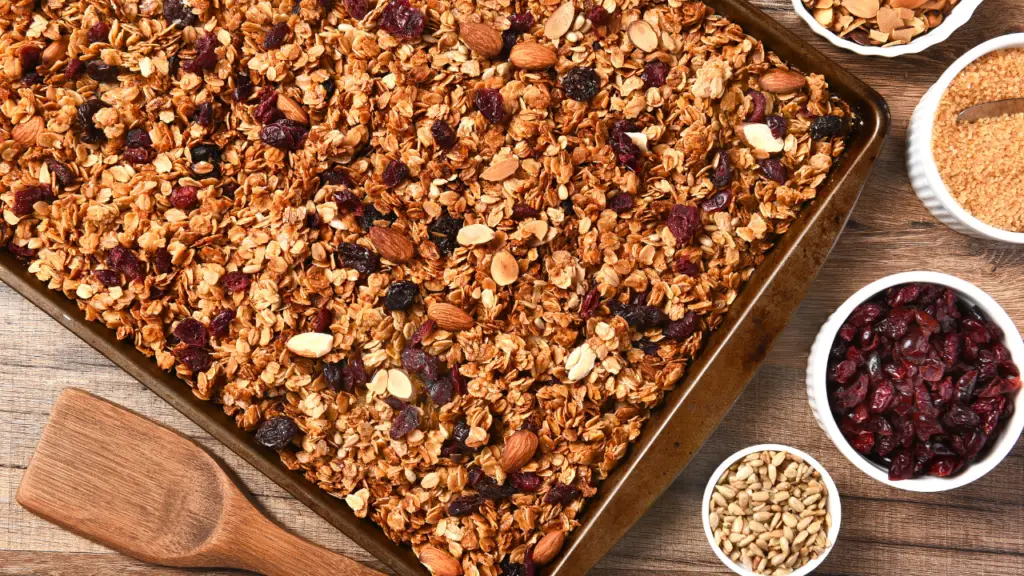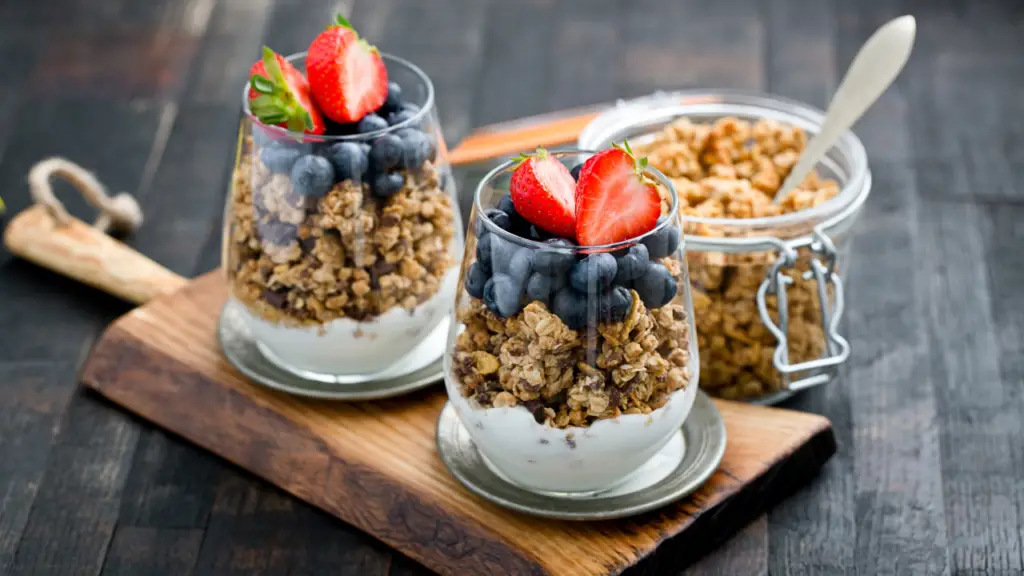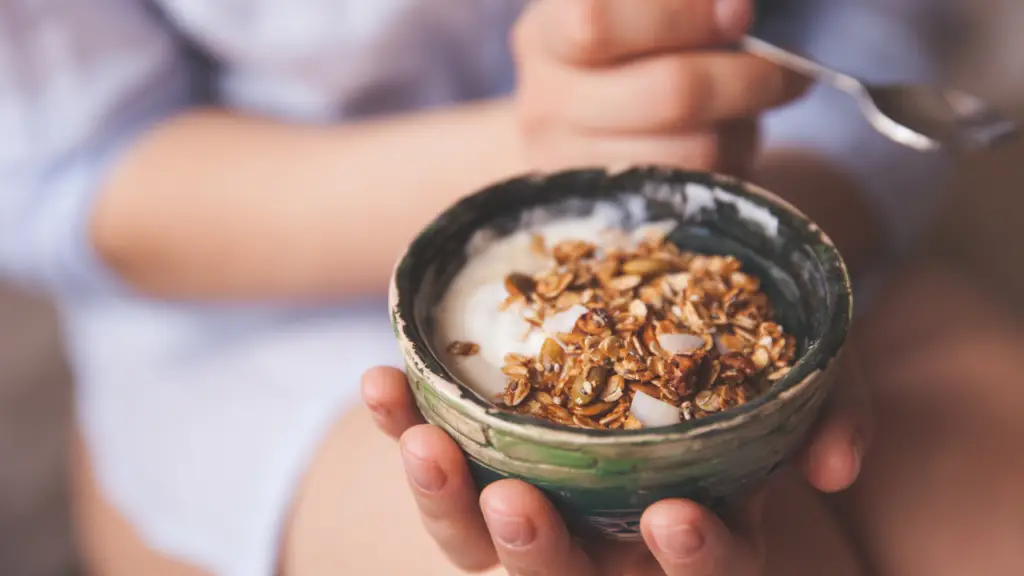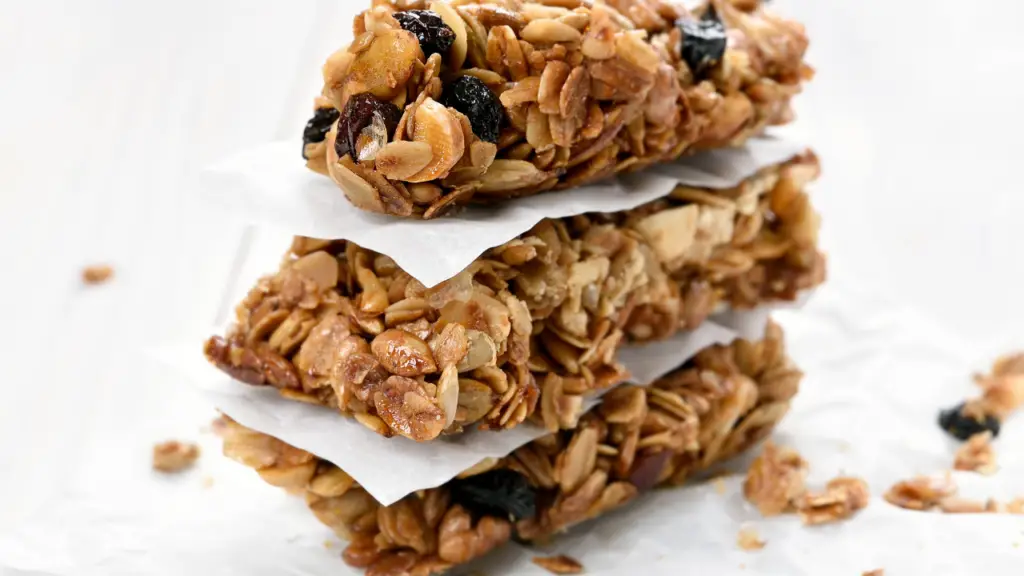Granola has made quite a name for itself. For those looking for healthy breakfast options, a bar to grab on the go, or a light office lunch, granola is a favorite. Would you believe that granola has been around since the 1860s!
Although, the granola breakfast revolution came much later, around the 1970s. Since then, you'll find granola almost anywhere and everywhere. And what's not to love about it considering it's jampacked with nutrients that are good for your health.
Following a diet can be intimidating as there's so much you've to leave out of your routine. Is that food safe? Can you add this dressing to your salad? So many questions, not enough answers. Therefore, we're here to answer all your gluten-related questions about eating granola on a gluten-free diet.
Recap of Gluten
In definition, gluten is the protein in grains such as wheat, rye, barley, and spelt. Extendedly, hybrid crops and byproducts of these grains also include gluten. Traditional processed foods, in most cases, have gluten in them in the form of an ingredient or additive.
Healthy people with no physical complications do not need to avoid gluten. Instead, the protein component of gluten is beneficial for the body. Alternatively, some people suffer from a gluten-related autoimmune disease or sensitivity. These are respectively called celiac disease and gluten sensitivity. In these conditions, the body cannot digest gluten properly, which triggers symptoms, usually digestive.
For this reason, celiacs and gluten-sensitive patients need to omit gluten from their diet. The only treatment known for now is a gluten-free diet. Therefore, all forms of gluten in foods are eliminated from the diet in exchange for gluten-free substitutes.
What is Granola?
Granola, in simplified terms, is a mixture of simple ingredients, baked to perfection. There's no limit to the varieties of ingredients used to make granola, resulting in different tastes. Although, the most common ones include oats, whole grain, nuts, dried fruit, and honey or maple syrup.

Granola is no longer considered just a breakfast item; it has found its way to snack bars too. Eat a granola bar as it is, or add it on top of greek yogurt, whatever suits your tastebuds! The classic combination is granola cereal with milk, which brings us to the fact that granola comes in cereal and packaged bars.
In terms of taste, the granola you're eating will depend on the comprised ingredients. Generally, you'll find granola to be primarily a sweet, crunchy food. Other ingredients like toasted nuts can add a savory touch, while dried fruits can enhance the sweetness.
Coconut flakes and vanilla are typical add-ins when it comes to bringing the flavors of granola together. Overall, there's an explosion of flavors and crunch with a delightfully chewy texture in your mouth whenever you take a bite of a granola bar.
The History of Granola
There's a long historical throwback to the granola you see on grocery stores' shelves nowadays. The Americans were fans of the heavy British-inspired breakfasts. Every American breakfast café had a full plate of baked beans, bacon, sausage, and black pudding.
A New York health spa owner, Dr. James Caleb Jackson, wasn't an enthusiast of these stomach-filling breakfast foods. He came up with a breakfast option that doesn't overfill your stomach early in the morning and is nutritious. The recipe came from graham flour crumbled and shaped into sheets, and then baked until crispy. This event occurred in 1863, and the formula was named ‘granula.'

Later on, a patient of Caleb Jackson was impressed and decided to add his touch. Dr. John Kellogg, the inventor of corn flakes, first came up with a substitute for the original recipe. He added rolled oats instead of graham flour and then renamed his invention ‘granola.' In the blink of an eye, cereals like granola became immensely popular.
Next, commercial companies entered the market, and post-1970s, granola made its place on grocery store aisles. Today, cereals sit in the position of the highest consumed breakfast food. Why? Because they're delicious and we no longer have the time to prepare and eat heavy breakfasts.
Gluten and Granola
The classic oats, honey, and nuts make gluten-free granola since the ingredients are naturally gluten-free. Unfortunately, it's not as simple as that. Granola is gluten-free when it's made of naturally gluten-free ingredients and doesn't come across cross-contamination risks.
Oats
Now, oats in granola are a problematic situation. Oats are stated as a gluten-free grain, meaning they don't contain gluten. However, oats are one of the grains with the highest risks of cross-contamination. Numerous situations are possible when it comes to oats getting cross-contaminated. The oats could be growing in a field with other gluten-containing grains.
The processing or packaging facility, even the storage area, could be gluten-containing enemy territory. It's the reason why oats are included in the list of most contaminated gluten-free foods. Always purchase oats that are labeled as gluten-free oats. Buying organic is also a must. Organic oats have lower levels of glyphosate and other pesticides.

Added Ingredients
Similar is the case with any processed goods added to the granola. Nuts, dried fruits, honey, maple syrup, vanilla extract, pumpkin seeds, peanut butter, etc., are gluten-free. But, this doesn't save them from getting in contact with gluten along the process.
Whole Grains
Added whole grains are usually a safe item since most granola manufacturers prefer gluten-free whole grains. You'll find brown rice in the typical list of granola items. However, don't let go of that worry train just yet.
Some manufacturers include wheat, barley, spelt, rye, or triticale in their granola bars. Take a look at the ingredients list. If it consists of any of these grains, it's a no-go for sure on a gluten-free diet.
Should You Eat Granola?
Besides the fact that granola is so tasty and you can't have enough of it, should you eat it? After all, you might have come across one blog or another that says granola is terrible for your health. Well, it may have some truth in it, but that depends on what granola you're eating. Here's whether you should eat granola and the benefits of it.
Choose Better Options
How healthy your granola is entirely dependent on the ingredients of the one you're buying. Some granola bars have increased grams of sugar because of syrups, chocolate chips, brown sugar, etc. These are the ones that have more sugar, carbs, and calories too.

Meanwhile, oats, whole grains, nuts, seeds, dried fruits are more proteins, fiber, and healthy fats. Choose granola made with coconut oil, pure maple syrup, ground flax seeds, coconut sugar, chia seeds, organic honey, organic sunflower seeds, and hemp seeds for a healthier version. Therefore, granola IS healthy but only when you go for healthy varieties and keep a balanced intake.
It's Fulfilling
We're not trying to prove Dr. Caleb Jackson wrong; granola is light on the stomach. You won't feel so full that lethargy takes a toll after a granola bar compared with a heavy breakfast. On the flip side, granola has increased grams of proteins and healthy fats alongside a considerate amount of carbohydrates. It makes granola an ideal energy-boosting food that keeps you full and doesn't let cravings get to you.
You Won't Get Bored
With granola, you're never limited to a handful of options. Whether you're looking for cereal varieties or different flavors for your next hiking trip, granola is there for you. From the classic oats, nuts, and honey version to vanilla almond, cinnamon orange, chai-spice, cranberry almond, and many more!
It Has Many Health Benefits
There are not just two or three benefits of eating granola when it comes to a healthy breakfast, lunch, or snack. Adding granola to your daily diet and eating it in balanced amounts have various advantages. For starters, the fiber in whole grains improves your digestive system and prevents diarrhea and constipation.
Weight-conscious dieters can make use of the lesser calories as long as they're buying less-sugary granola. The astonishing amount of manganese in granola regulates insulin production in diabetic patients. Vitamin E gives that healthy glow to your skin. Lastly, it promotes healthy fats in the body and regulates metabolism, so you feel energetic!
Other Reasons Granola Doesn't Suit You
Maybe it's not the gluten content that's disturbing your digestive system. Perhaps it's something completely different. Gluten-free dieters cannot stop worrying when their gluten-free granola bars are causing digestive problems. Here are a few reasons your gluten-free granola bars could be causing you issues.
Labeled Gluten-Free Products Aren't For You
Labeled gluten-free products under the FDA guidelines contain gluten less than 20 ppm. For most gluten intolerant individuals, this quantity works. That's not the case for every person. Some individuals are highly sensitive to gluten, which makes them less than 20 ppm quantity insufficient.

Their body can still react to the tiniest gluten consistency. Thus, if that's the case, look for certified gluten-free granola made in a gluten-free facility. If it makes a difference, that's your cue to increased gluten intolerance and buying certified GF products.
The Gluten May Be Hiding
Some amateur dieters believe that no gluten-based ingredients mean they're good to go. Hence, they often end up buying traditional granola bars without gluten ingredients that still trigger their symptoms. The problem might be behind the other ingredients.
The oats may be cross-contaminated, or the processed dried fruits may contain gluten additives. As long as a product isn't labeled or certified gluten-free, cross-contamination remains a risk.
You're Eating Too Much Fiber
Have you ever heard of the term ‘excessive fiber intake'? It's when your body is not accustomed to increased amounts of fiber that you suddenly eat. When the body is not capable of processing all this fiber, it results in digestive symptoms. Symptoms of excessive fiber intake include bloating, gas, constipation, diarrhea, and abdominal pain.
But they're also symptoms of gluten intolerance, so you'll have to look at what's causing the real problem. So, if gluten-free products aren't working, look at how much fiber you're consuming. It shouldn't be more than 70g/day.
You're Sensitive to Other Ingredients
There's much more to the world of sensitivities, intolerance, and allergies than just gluten. Many people cannot consume oats or nuts, which are common ingredients in granola. They come with slightly different symptoms than gluten intolerance, like itchiness, rashes, nasal congestion, nausea, etc. Ultimately, these ingredients can ruin your physical health, and it's essential to identify the source of the problem.

Gluten-Free Granola Brands
On the gluten-free diet, you'll be on the lookout for gluten-free substitutes for the traditional version. It's not always easy scrolling tons of sites to find the gluten-free granola bar that makes your tastebuds happy. Here are several gluten-free brands with tasty granola bars for you to make your choice.
- Udi's Gluten-Free Granola
- Nature's Path Organic Granola
- One Degree Sprouted Oat Vanilla Chia Granola
- Annie's Gluten-Free Chewy Granola Bars
- 88 Acres Granola Bars
- KIND Bars
- Bob's Red Mill
Note from author: Always be cognizant of any ingredients that may cause other health issues, such as processed oils. Always, always read your ingredient label and purchase products with whole natural ingredients.
Final Words
Our diet is always a top priority, especially for those who have gluten intolerances. And understanding if a product contains gluten is essential when eating a gluten-free diet.
We all want to enjoy the food we eat, but having reactions will make you sorry you didn't do your due diligence. Always be mindful and reading labels to ensure the granola you are eating is labeled gluten-free.
Or look online for a healthy granola recipe to make a homemade granola recipe at home. You will be creating crunchy granola clusters that are gluten-free that your whole family will enjoy.

The owner of this website, HealthYeahLife.com is a participant in the Amazon Services LLC Associates Program, an affiliate advertising program designed to provide a means for sites to earn advertising fees by advertising and linking HealthYeahLife.com Review to Amazon properties including, but not limited to, amazon.com.





